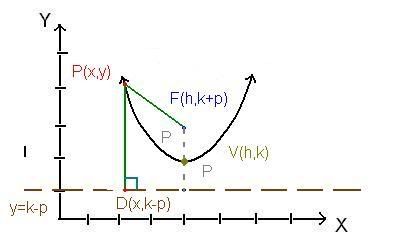Conics: The Parabola, Circle and Ellipse (Cheek's 3rd Scribe post)
Hello its cheeks again working on today's scribe post on Conics: The Parabola, Circle and Ellipse. We started off by talking about our website reaching its max on 300 mb due the cause of all the images we posted up. So for now on we will be using photobucket to upload our images into our blog. We then watched some videos that were quite hilarious based and mathematics in relation with the real world. Our final video was about a tire then went loose as the driver was driving and how it rolled, flyed, bumped into other cars and reaching its final destination back into the drivers car again and the probability of that was 0.0000001%. Think its possible? Comment it. Our teacher then wanted all of us to comment about how mathematics is used in our other subjects. Think it is? Comment that too.
We continued our lesson where we left off from the anatomy of the parabola...
Our lesson began and ended with our dictionaries:
Deriving the standard form for the equation of a parabola
__ __
PF=PD (by def'n)
√[(x-h)²+[y-(k+p)]]² = √[(x-x)²+[y-(k-p)]]² (Distance formula)
(x-h)²+[y-k-p][y-k-p] = [y-k+p][y-k+p] (Square both and simplify)
(x-h)²+y²-ky-py-ky+k²+kp-py+kp+p² = y²-ky+py-ky+k²-kp+py-kp+p² (expan)
if we were to bring the terms that cancel from the left to the right side we simplify to:
(x-h)² = 4py - 4pk (balance)
(x-h)² = 4p(y-k) (factored)
***Standard form for equation of a vertical formula
__ __
PF=PD (by def'n)
√[[x-(h+p)]²+(y-k)²] = √[[x-(h-p)]²+(y-k)²] (Distance formula)
[x-h-p][x-h-p] +(y-k)² = [x-h+p][x-h+p] (Square both and simplify)
(y-k)²+x²-hx-px-hx+h²+hp-px+hp+p² = x²-hx+xp-xh+h²-hp+px-ph+p² (expan)
if we were to bring the terms that cancel from the left to the right side we simplify to:
(y-k)² = 4px - 4ph (balance)
(y-k)² = 4p(x-h) (factored)
***Standard form for equation of a horizontal formula
__________________________________________________________
Circle: A locus of points that move such that they are a fixed distance (radius) from a fixed point (centre).
Deriving the standard form for the equation of a circle
__
OP = r (by def'n)
√[(x-h)²+(y-k)²] = r (Distance formula)
(x-h)²+(y-k)² = r² (standard form for a circle)
__________________________________________
Ellipse: A locus of points that move such that the sum of the distances (focal radii) from fixed points (foci) is constant.
The anatomy of the ellipse
A1 and A2 are the vertices of the ellipse
A1A2 is the major axis of the ellipse. It is a line of symmetry and its length is 2a
B1B2 are the endpoints of the minor axis.
B1B2 is the minor axis of ellipse. It is a line of symmetry and its length is 2b.
F1 and F2 are teh foci of the ellipse each focus is C units from the centre.
PF1 and PF2 are called the focus radii. Their sum is always 2a, the length of the major axis.
The standard form for the equation of an ellipse
Standard form for a horizontal equation
Standard form for a vertical equation
The focal radii property
Suppose P is at A
PF1 + PF2 = A1F1 + A1F2 (by def'n)
PF1 + PF2 = A2F2 + A1F2 (by symmetry
PF1 + PF2 = A1 A2
PF1 + PF2 = 2a
The Pythagorean property
Suppose P is at B
PF1 + PF2 = B1F1 + B1F2
By symmetry we know that
B1F2 = B1F1
there fore...
PF1 + PF2 = B1F1 + B1F1
PF1 + PF2 = 2B1F1
By the focal radii property
PF1 + PF2 = 2a
therefore..
2a = 2B1F1
a = B1F1
and by Pythagorean theorm
b² + c² = a² or c² = a² - b²
Thats all for tonight the next scribe is Jefferson

No comments:
Post a Comment